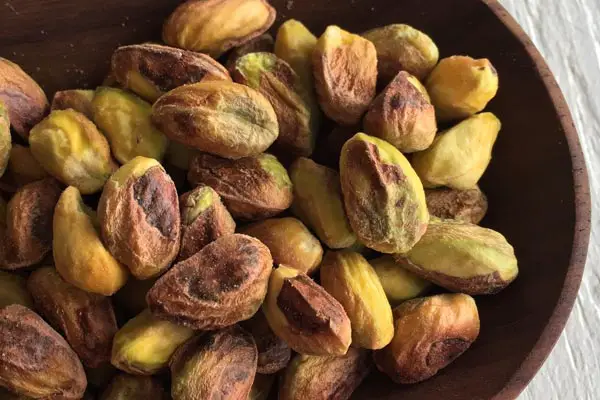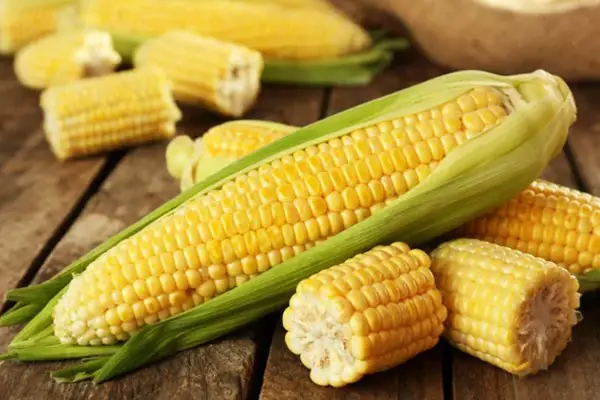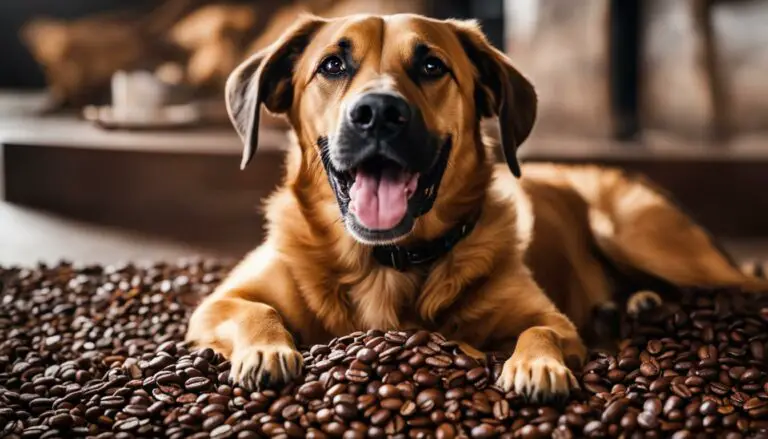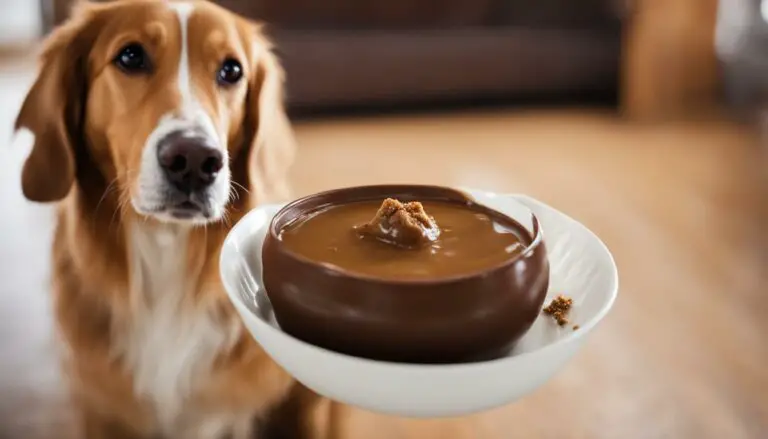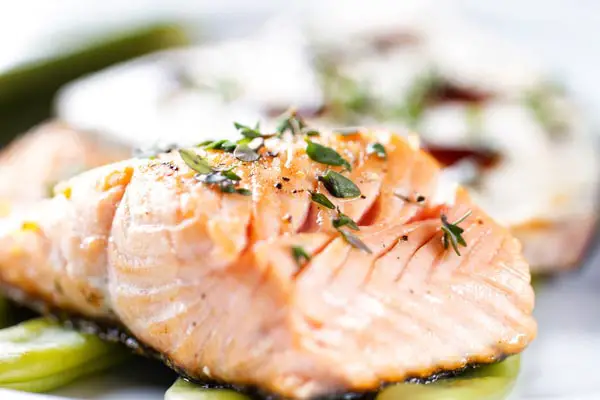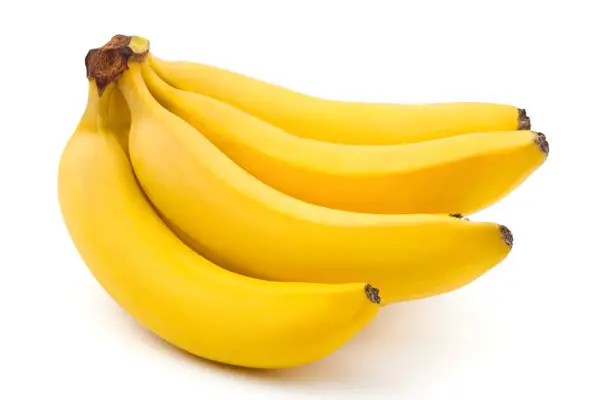Can Dogs Eat Pistachios? Are Pistachios Safe For Your Dog?
Can Dogs Eat Pistachios?
Anyone who owns a mutt knows just how much our furry friends love peanut butter treats. In fact, most dog trainers will recommend that you give your dog a peanut butter treat every once in a while.
So, if pooches love peanut butter, does it mean that it is safe to give them all kinds of nuts including pistachios? This guide will let you in on everything you need to know about how pistachios may affect your dog.
What are Pistachios?
What we refer to as the pistachio is Pistacia Vera. This plant was introduced into the United States in the 1850s and was grown for ornamental purposes.
Originally, the pistachio nuts used to be dyed red to make them attractive to consumers in American grocery stores.
Nevertheless, this practice was all but discontinued because a large part of the consumer population is allergic to the chemicals used in red food dyes.
Currently, the United States is responsible for the growth and exportation of up to 76% of all pistachio nuts in the globe.
It is also a major export crop in China, Iran, and Turkey. Let us first look at the nutritional content in pistachios.
The Nutritional Profile of a Pistachio Nut
According to the British Journal of Nutrition, a single pistachio nut contains about 55.7 Kcal.
The calories are comprised of 2.06 grams of protein, 2.79 grams of carbohydrates, 1.03 grams of dietary fiber, and 4.44 grams of fat.
The above profile demonstrates that pistachios are a very energy-dense nut. Thus, if you feel their carbohydrate content doesn’t meet your dog’s energy needs, the fat content is more than enough to meet these needs.
Unfortunately, this high-fat content is also where the problem with pistachios arises. Imagine giving your mutt 100 grams of pistachio nuts.
This would mean that you would be giving them 44.44gms of fat, which is a lot more than the 20.6gms of protein and 27.97gms of carbohydrates.
The fortunate thing, however, is that the fat in pistachios also contains monounsaturated fatty acids which are famous for their anti-inflammatory and antioxidant properties.
Monounsaturated fatty acids are effective at increasing good cholesterol levels while reducing the levels of bad cholesterol.
And even though pooches are not known for being especially susceptible to cardiovascular ailments, making sure that they do not have unwanted cholesterol in their blood ensures that you have one less issue to worry about.
Beyond their energy-dense profile, pistachios also contain the following micronutrients that will benefit your dog:
Vitamin B Complex – These nuts are rich in vitamin Bs such as niacin, thiamine, pantothenic acid, riboflavin, and pyridoxine. These minerals play a crucial role in the dog’s body processes, especially in metabolizing macronutrient molecules.
Beta-carotene – this micronutrient is known for its antioxidant properties and is a precursor to Vitamin A. Beta-carotene promotes a healthier and better-looking coat as well as boosting your dog’s immune system. Additionally, there is evidence that beta-carotene slows down cognitive decline making it very beneficial to senior dogs.
Calcium – another essential nutrient that is found in pistachios is calcium and is useful for building and maintaining stronger and healthier bones. It is also vital in facilitating essential processes such as muscle contraction.
Vitamin E – this is another antioxidant which has valuable effects on your dog’s coat and skin as well as enhancing its immune system. The combination of Vitamin E, beta-carotene and Vitamin A has especially powerful antioxidant properties.
Magnesium – magnesium has a host of functions among them being the regulation of calcium, sodium, and potassium levels in the blood. The aforementioned minerals are vital for establishing balance within the body.
Additionally, magnesium helps in soothing muscle spasms. This ensures that your dog is able to recover quickly after a long walk or run.
Iron – pistachios contain iron which is the mineral needed by blood in regards to oxygen. Iron is used in hemoglobin formation. Hemoglobin is a protein that transports oxygen to tissues and carries away carbon dioxide.
Copper – in the dog’s body, copper is essential for the efficient production of red-blood-cells. It is also necessary for processes such as cellular functioning and boosting the immune system.
Selenium – This is another antioxidant that works well with copper, zinc, vitamin A, and vitamin E.
Zinc – also has antioxidant properties which make it effective at boosting the immune system.
Manganese – This mineral is vital for ensuring the optimum functionality of the central nervous system. Additionally, it is vital for the production of bones, blood clotting factors, sex hormones, and connective tissue.
Phosphorous – a stronger and healthier skeletal system is not only reliant on calcium but on phosphorous as well. This mineral is important because it enhances bone density, structure, and integrity. It aids in cognitive functioning as well.
In light of what we have just discussed, it would seem that pistachios are the next best thing for your dog, but not so fast. Here is why:
Why your dog shouldn’t have too much pistachio nuts?
Even though these nuts have a load of nutrients that contain immune system boosting, anti-inflammatory, and antioxidant properties, they also contain a high-fat content as well; and this is where the problem lies.
Animal experts and vets are cautious of the 44.4 grams of fat found in pistachios finding its way to your doggie’s system.
In addition to the dangers of high-fat content, the shell of pistachios also poses another risk. When your dog eats the nut unshelled, the shell might splinter in the dog’s stomach and cause problems such as intestinal obstructions, especially among the smaller pooches.
As such, if you are going some pistachio treats to your dog, ensure that you first remove the shells. Additionally, do not flavor season, or add any other ingredient. Also, you shouldn’t butter the nuts as they contain very high-fat content as they are.
So, can you give pistachio nuts to your mutts? By all means, yes. However, you shouldn’t have the nuts as a staple part of your doggie’s regular diet. Pistachio nuts should only be used as treats and shouldn’t account for more than 10% of that day’s diet.
But what happens if your dog helps itself with more than its fair share of pistachio nuts? This brings us to the topic of pistachio poisoning.
What is Pistachio Poisoning?
Pistachios that have been processed properly should not be directly toxic to your mutt. Nevertheless, your dog’s digestive system is not made for the proper digestion and extraction of proteins from nuts.
As such, when pistachio nuts are eaten in large quantities, they may cause pancreatitis, gastrointestinal distress, and obesity.
This is what is referred to as pistachio poisoning and may occur to your dog regardless of whether it eats all of them at once or in small frequent portions.
In addition to the risk posed by the pistachios themselves, these nuts also contain Aspergillus mold which is aflatoxin that is particularly dangerous to canines and may have fatal consequences if consumed in large amounts.
Symptoms of Pistachio Poisoning in Canines
The following signs may be an indication that your dog has overindulged in pistachios:
- Diarrhea
- Vomiting
- Greasy appearing stools
- Dehydration
Eating too many pistachios often results in pancreatitis in dogs, and the signs may include:
- Vomiting
- Diarrhea
- Fever
- Depression
- Difficulty breathing
- Swollen abdomen
- Severe abdominal pain
- Weight loss
- Weakness
- Orange urine
- Lethargy
- Lack of appetite
- Dehydration
- Heart arrhythmias
The following signs indicate that your mutt is suffering from aflatoxin poisoning from the Aspergillus mold:
- Liver failure
- Lethargy
- Vomiting
- Loss of appetite
- Jaundice
Something to Note
Even though pistachio nuts are among the more common means of Aspergillus mold finding its way to your dog and afflicting it with its deadly aflatoxins, these nuts are not the only way in which your dog could meet these aflatoxins.
The mold is found in other types of plants as well including hay, corn, and wheat which are often used in the production of human and dog food.
In some instances, animals might ingest these toxins and then transmit it to others through byproducts such as eggs and milk.
The Department of Animal Science at Cornell University has noted that all animals can be affected by aflatoxins and this is why there are strict regulations regarding the amounts allowed in foods.
What are the causes of pistachio poisoning in canines?
Even though pistachios are not poisonous, they are unfortunately associated with secondary risks such as:
Salt
The pistachios that we eat often contain a high salt content in addition to other seasonings and additives.
Too much salt is dangerous to dogs as it increases their water retention leading to an increased risk of kidney diseases. This is especially dangerous for canines with heart ailments.
Aflatoxins
These are caused by the Aspergillus mold. And even though the aflatoxin levels found in human food can be well tolerated by us, dogs do not share the same resiliency as they are incredibly sensitive to aflatoxins.
Most nuts, in addition to pistachios, such as almonds, brazil nuts, and walnuts also contain trace amounts of these molds.
A high phosphorous content
Pistachios have a high phosphorous content which increases the likelihood of developing painful bladder stones according to the Pet Coach.
Pancreatitis
The high-fat content in pistachio nuts can contribute to the development of canine pancreatitis which, according to pet MD, is a painful condition that could potentially lessen your dog’s lifespan.
Choking
Mutts are not known for their excellent chewing abilities, and this may result in a potential choking hazard especially when one considers the physical nature of pistachio nuts.
Pistachios are hard nuts and are often sold in their shells. This means that they can break into either sharp or jagged pieces which cold puncture parts of the gastrointestinal tract.
Diagnosis of Pistachio Poisoning
After the observation of the symptoms that we discussed above, your vet shall then proceed to look into the patient’s history regarding what they have had to eat lately.
The typical procedure involves a physical examination followed by a chemical profile. Stools, vomitus, and urine are also tested to identify any underlying ailments or aflatoxins and other toxins.
The preliminary diagnosis based on history and the physical examination can be used to determine treatment as the final diagnosis is still being processed.
Further testing might be necessary depending on the symptoms being exhibited. For instance, if the animal is displaying symptoms of throat or esophagus damage, an x-ray might be necessary to determine if this is indeed the case.
Treatment of Pistachio Poisoning
Treatment is reliant upon the reaction your mutt has had to the pistachios. Thus, the medications given will be in line with the symptoms being displayed.
At times, supportive treatments such as IV fluids might be necessary for immediate concerns such as dehydration.
Nevertheless, the medication may include anti-nausea, antibiotics, and pain management medicines. These drugs can either be given intravenously or through an intramuscular injection.
When it comes to aflatoxin poisoning, it may have adverse effects on the liver and thus vitamin K and hepatoprotection treatments are the most recommended modes of treatment in such a case.
Recovering from Pistachio Poisoning
Keep the sick mutt in a calm environment away from distractions and ensure that they consume their medicine as per the vet’s instructions.
The medications typically include antibiotics, antacids, and liver and stomach protectants to mitigate the symptoms.
Dogs that have been diagnosed with aflatoxin poisoning might need return visits to the vet to check on the status of their liver.
If your dog is unable to keep its food down and is constantly vomiting, you may need to withhold from feeding them by mouth for a couple of days until the symptoms go down. When they are finally able to eat by themselves, feed them low fat, low protein, and high-fiber meals.
Pistachios are nuts that may have incredible benefits but, unfortunately, they present a significant risk for doggies.
Their high-fat content and aflatoxins are things that are especially dangerous to dogs. Nevertheless, you can use them as treats every once in a while but not as a meal.
